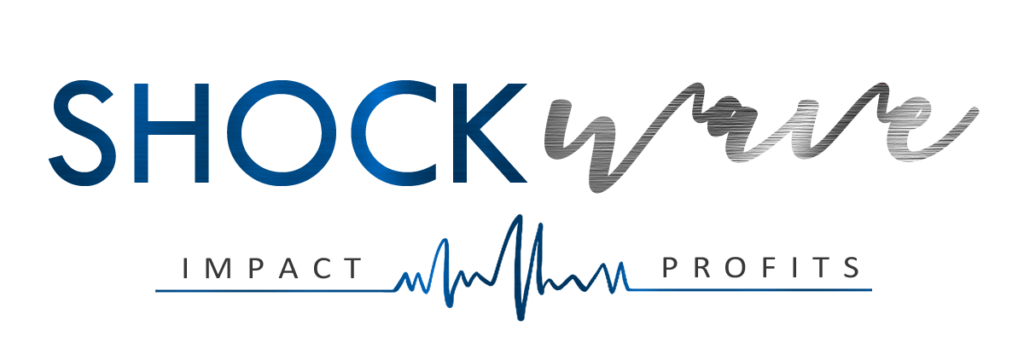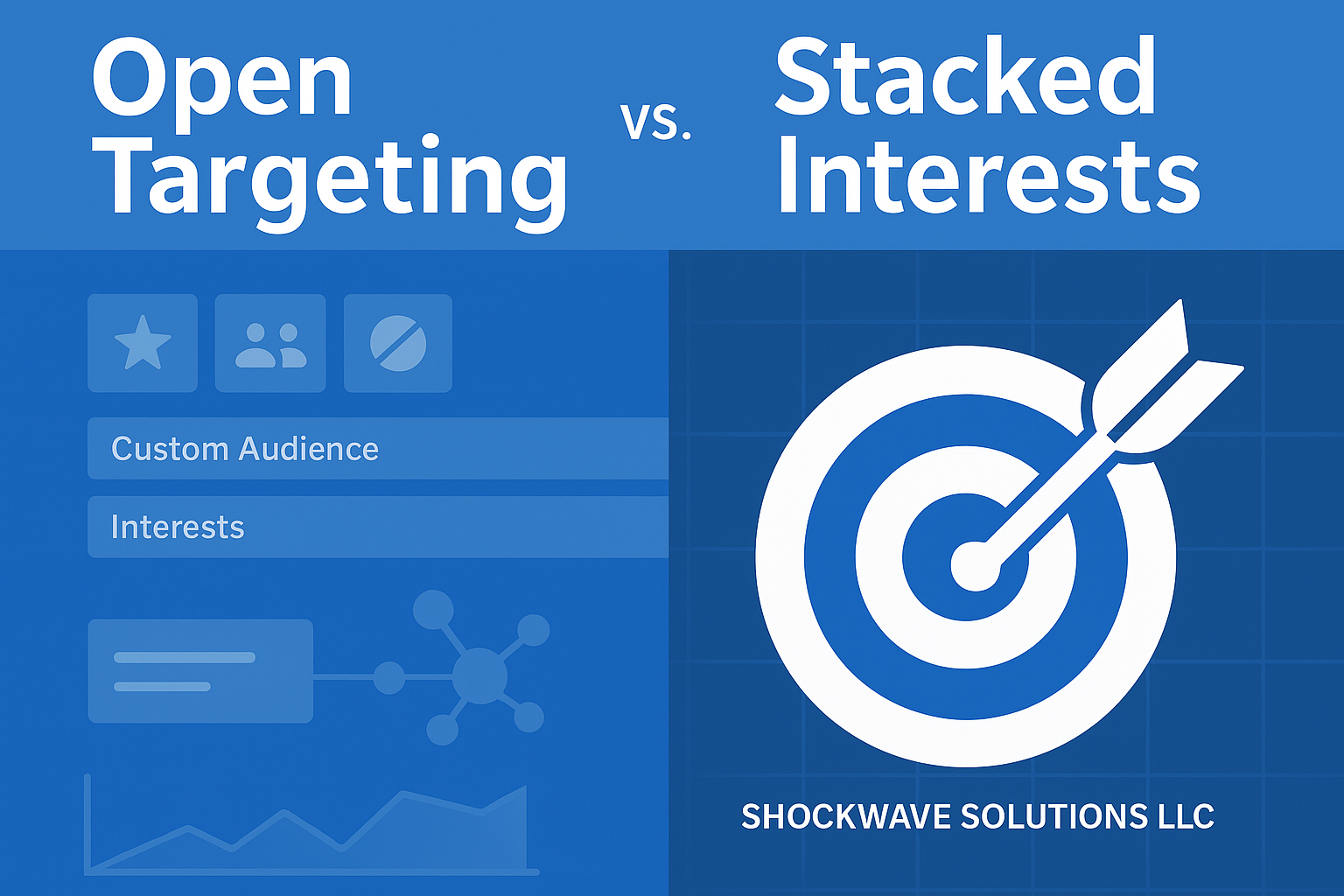The No-Hype Way to Know What Works
In a world where ad performance is more volatile than ever, advertisers are constantly tweaking, optimizing, and second-guessing. But what if the problem isn’t your creative, offer, or even your funnel? What if your targeting setup—especially if it’s full of stacked interests, custom audiences, and outdated logic—is actually holding you back?
With the rise of AI-powered media buying and platform shifts like Meta’s Andromeda, the game has changed. And the smart move now isn’t guessing—it’s testing. Cleanly, clearly, and with results that speak for themselves.
Here’s how to run a no-nonsense, low-risk test that reveals whether open targeting can outperform your current setup—and how to make a smart budget shift based on outcomes, not opinions.
What Is Open Targeting—and Why It Matters Now
Open targeting refers to a setup where you strip your campaign down to the essentials: broad geo (country, state, region), age range, and nothing else. No stacked interests. No behaviors. No lookalikes. No retargeting layers. You’re letting the platform find the buyers using its algorithm, not your assumptions.
Why would you do that?
Because platforms like Meta (Facebook/Instagram) are moving toward AI-first ad delivery. With updates like Andromeda, Meta’s ad delivery system now has deeper behavioral data, better modeling, and faster learning loops than most human-built audiences can match.
That doesn’t mean open targeting always wins—but it means it’s a serious contender. Especially when many “interest stacks” are outdated, overused, or too narrow to scale. The only way to know if open targeting works for you is to test it—cleanly.
How to Run a Clean, Low-Risk Test
You don’t need to blow up your ad account or rebuild everything from scratch. A smart advertiser runs a controlled, fair head-to-head comparison between open targeting and their best-performing setup.
Here’s the exact process:
1. Duplicate Your Best Campaign
Pick your current top performer—whether it’s a lead gen funnel, purchase campaign, or booked call offer. Duplicate it. Leave the original campaign completely untouched. This becomes your control.
2. Switch to Open Targeting in the Copy
In the duplicate, remove all targeting parameters except for age and geo. No interests. No lookalikes. Nothing layered. Just a wide-open setup.
Keep everything else the same:
- Same creative
- Same copy
- Same placement selection (auto is fine)
- Same optimization event (purchase, lead, etc.)
- Same budget pacing (daily or lifetime)
3. Set Modest, Stable Budgets
Start both campaigns with modest, manageable daily budgets—something low enough to avoid risk, but high enough to generate measurable conversion data. Think in the range of $50–$150/day, depending on your industry and funnel cost.
4. Let Both Campaigns Run Long Enough
This part matters. Don’t make decisions too early. Let each version run long enough to generate:
At least 20–50 conversions (minimum)
Enough spend to assess ROAS or cost per result
A full learning phase, ideally beyond it
Watch them side by side. You’re looking for data-backed outcomes, not daily swings or “gut feel.”
What Not to Trust During the Test
Many advertisers unintentionally sabotage their own test by reacting to early noise. Here’s what not to do:
❌ Don’t react to early day-to-day swings. The algorithm is still learning. Let it run.
❌ Don’t “fix” the open targeting by adding interests. That defeats the test.
❌ Ignore auto creative suggestions (for now). Focus on message consistency.
❌ Avoid pausing too soon. If you’re under 30 conversions, the data isn’t mature.
The test only works if both versions are allowed to operate under fair conditions. Tinkering halfway through invalidates your results—and leaves you back where you started: guessing.
Why You Should Be Doing This Right Now
You might be wondering: “Why test this now?”
Because the ad platform has already changed—even if your strategy hasn’t. Meta’s shift to Andromeda isn’t just a UI update. It’s a fundamental change in how delivery works. Targeting logic from 2020 or even 2022 is increasingly outdated.
Here’s what’s happening behind the scenes:
- Meta is prioritizing signal quality over audience precision.
- It’s leaning into machine learning to match ads with high-intent users
- The more you interfere with that learning (via audience stacking), the more likely you are to confuse the system
So if your current targeting is built on legacy assumptions, you may be competing at a disadvantage—paying more for worse outcomes.
This simple test allows you to confirm whether open targeting improves your results now, without rebuilding your entire system. It’s controlled, clear, and it puts the data back in the driver’s seat.
Owner’s Quick Checklist
Before you launch your test, run through this list:
✅ One clear campaign outcome (purchase, lead, booking)
✅ Duplicate your current best campaign
✅ Set up a true open targeting variant (no interests or lookalikes)
✅ Same creative, copy, and placements
✅ Modest budgets to minimize risk
✅ Let both run long enough to collect data
✅ Compare based on conversions and ROAS, not feelings
✅ Make decisions based on real outcomes, not early noise
Stick to this, and your results will speak for themselves.
Conclusion: Let the Data Decide
It’s easy to get swept up in trends or second-guess performance. But the real power move is doing what most advertisers won’t: running a clean test and trusting the data.
Open targeting isn’t magic—but it might be a better match than your stacked interests in today’s ad environment. Especially with platform shifts like Andromeda, letting the algorithm do more of the heavy lifting can improve efficiency, scale, and return—if you validate it properly.
So don’t guess. Run the side-by-side. Watch your actual conversions and ROAS. Then shift budget toward what’s proven to perform—no hype, no drama, just clarity.
Bonus Resources:
Want tools to help you run the test? Grab:
- Richard Parkin’s Andromeda eBook
- Meta ad targeting playbooks
- Traffic testing SOPs
👉 specialopspodcast.com/visionary-vault

